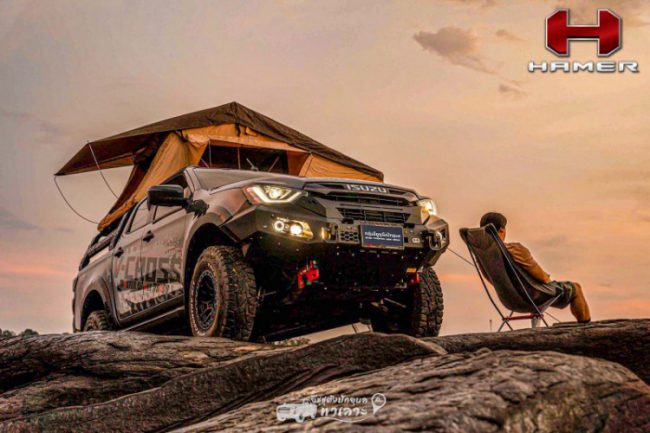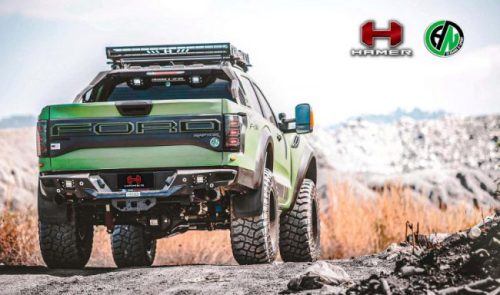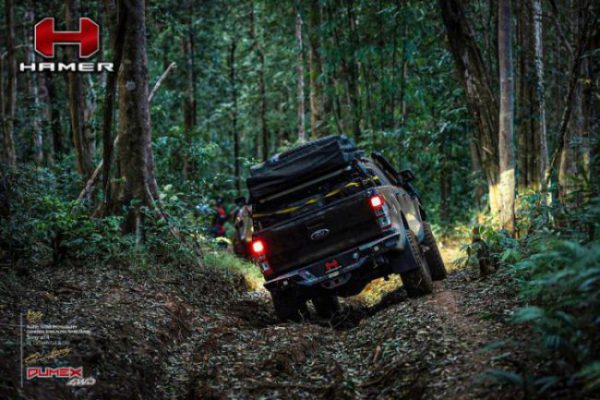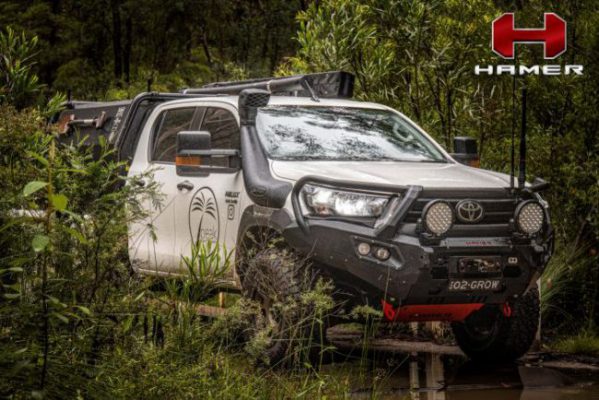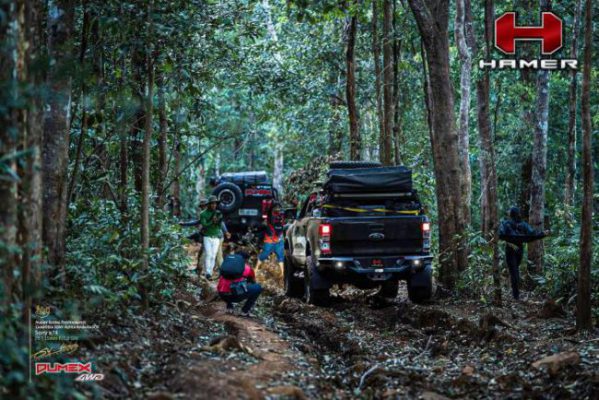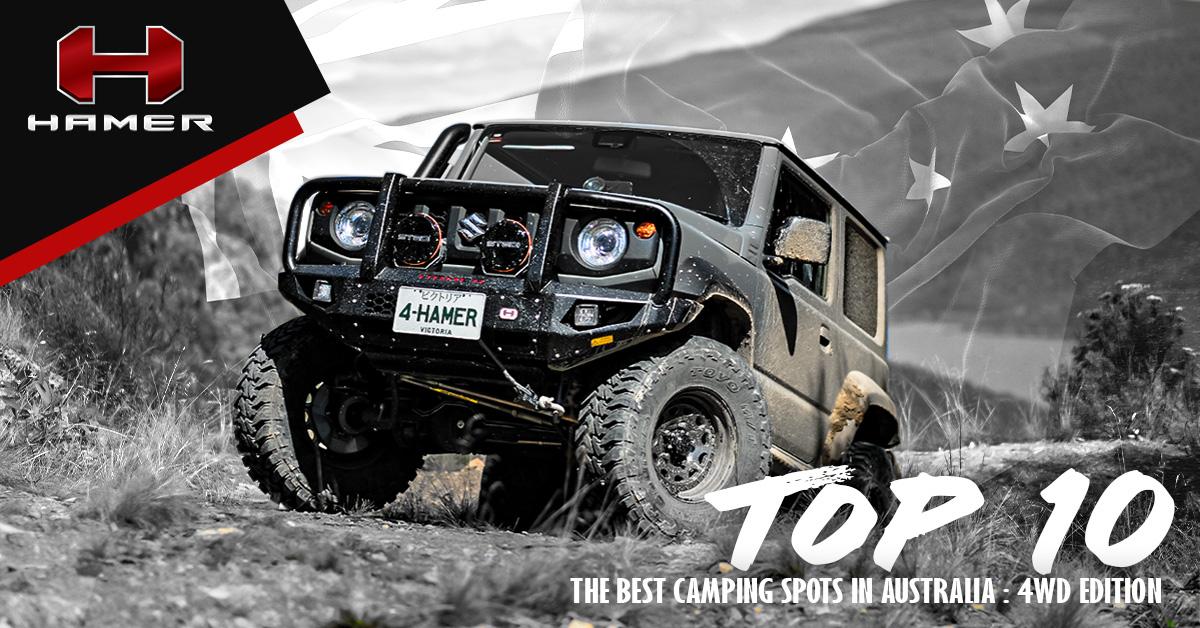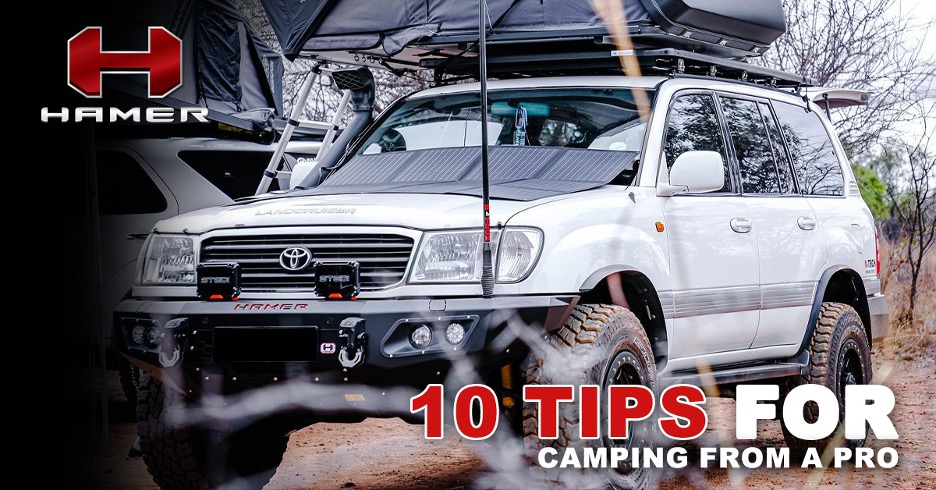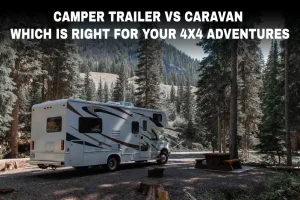NEWS & ACTIVITY
10 Tips For Camping With Your 4WD Vehicle!
Camping in the nature has recently become very popular, not only because you could get away from all the hustle, but you can also enjoy the peace of nature and the time to yourself. In this article, HAMER has some tips for you to prepare yourself for any upcoming 4wd trips. No matter how difficult trails are, you will arrive at your destination safely without any worries.
1. Plan Your Camping Trip and the Right Equipments
The first thing you need to do would be to plan your camping trip, your destination, the roads or trails you must drive, rest stops, and especially, the travel duration as you will have to prepare your off-road vehicle. Accessories are the important tool you cannot miss, these accessories include tent racks, spare tires, winches, additional lighting, mobile chargers, a kitchenette, drinking water, food, or GPS to guide your way during the trip.
In case you do not have sufficient room to store all these necessities, installing a roof rack is a good idea. The roof rack can help you increase the storage space on the top of your cabin to keep all your camping equipments, also helping you to save up some spaces inside the vehicle.
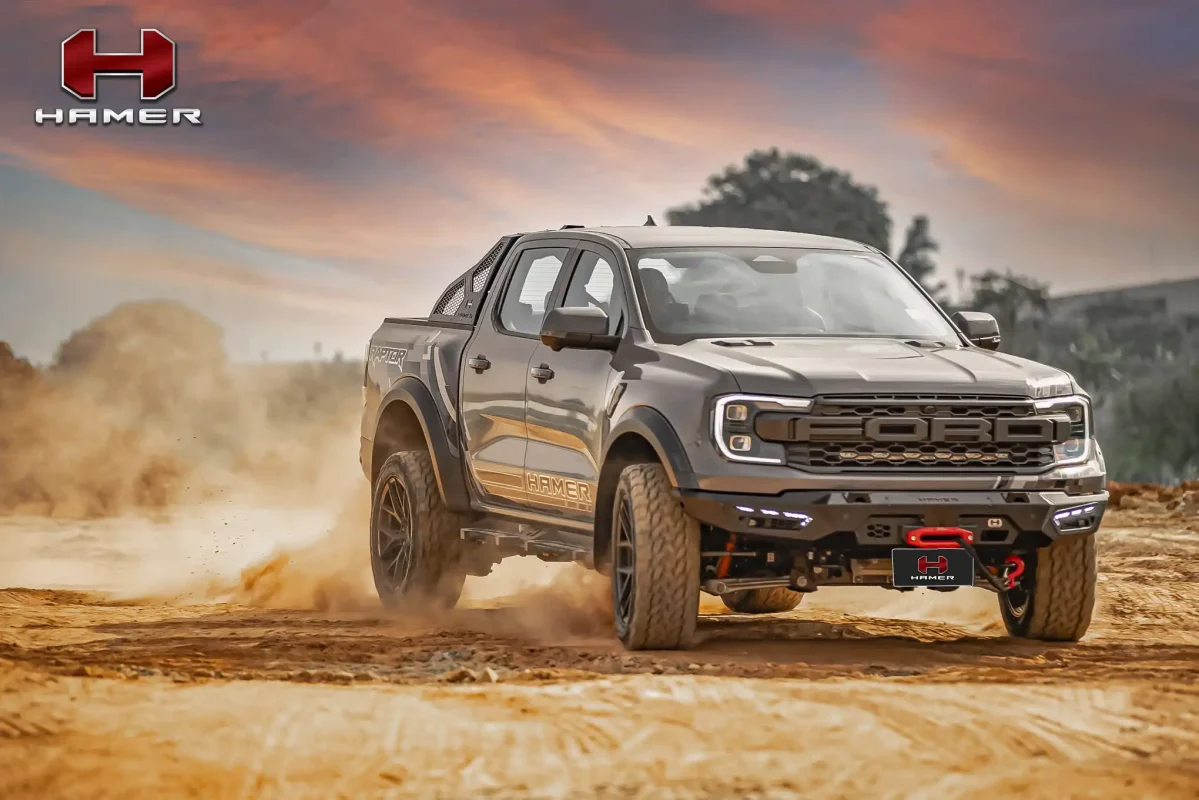
2. Ensure to Check Engine Conditions Before Your Camping Trip
Make sure to check the level of engine oil, brake fluid, and the water level in the radiator because if the vehicle is not in the right condition, it might affect the operation of your vehicle during your 4WD trip. If these necessary fluids are not well taken care of, it might cause a mal-function of the engine, resulting in an abrupt stop to your trip.
Brakes are undeniably extremely important and you do not want to come across a situation where brakes are not functioning properly so it is crucial to do a check-up before your trip.
Ensure not to forget to add water for the windshield wipers as well because if you go to the forest that has a lot of mud or dust and you can’t use wipers to clear the dirt on the windshield, driving could become much more difficult and dangerous that might cause the problems during your camping trip.
3. Prepare Your Tires
Of course, rough trails require tires with different pressure than driving on smooth tarmac roads like in the city. Therefore, you should deflate the tire to allow more surface contact of the tire during 4wd driving. When more tire surface touches the road, the weight will be more evenly distributed and balanced, tires will also absorb more impact when facing rough roads, giving a better grip on the road.
After the trip, when you’re back on the normal tarmac road in the city, don’t forget to inflate the pressure back to normal as well. Driving on a normal road with soft tire pressure could be dangerous for you.
4. Always Keep the Engine RPM
Keeping the engine RPM is important, especially when you drive through steep or rough trails. Going through the trail, you should not push the accelerator and release it periodically but instead, you should lightly push the accelerator and hold it to maintain a constant engine RPM speed. Your feet should stay and hold on to the accelerator.
If want more speed, then simply push harder and when you want to brake, slowly pull your feet off slowly and push the brake lightly. Driving at a low speed like this will help the car to drive better because the wheels are not independent, making it easier to control the car.
5. Use Low Gear
Reasons why you should drive off-road vehicles in low gear when on the trails because lower gear gives more propulsion and traction than higher gears. Driving low gear downhills will help to maintain a slow and steady speed. When the car is stuck on a slope and uneven incline hill, using a low gear will increase more power to drive the car forward better.
However, if your car is stuck in dirt or mud until you can’t get up, it is highly recommended to use a winch as help. Attach the hook of the winch firmly to the tree, then press the winch remote to pull your off-road vehicle up out of the pit as you slowly speed up in low gear by simply pushing the wheels out of the pit.
6. Driving Through Slopes
Off-road driving on sloping or inclined trails could be very challenging because when driving on a slope you will feel that the car is constantly turning to the side as if the car is being tilted.
Do not control the steering wheel in the opposite direction, hoping to balance the car in a straight line because that will only cause the car to overturn. All you must do is to keep the steering wheel straight, drive slowly, keep the engine RPM, and then lightly push the accelerator to make the car move forward until the end of the road.
7. Know the Size of the Off-road Vehicle
You should know the width, length, and height of your off-road vehicle because when you encounter narrow and low trails you will know if you can drive this off-road vehicle through that trail. Knowing your own vehicle’s dimensions mean you will not have to risk driving until your car is stuck on the way. Not only wasting your time, getting stuck also means you could be blocking off the trail of other vehicles.
8. Make your Way Through Mud, Puddles, or Forests Carefully
When you face the trail with a mud, puddle or an uneven ground with cluttered grass or small trees, you should slow down and drive through carefully, prevent dirt, mud, water, or stones from splashing into the engine compartment below, which may cause engine failure and eventually leading to your vehicle being unable to continue with your trip.
If you frequently travel uphill and into the forest for camping, installing the HAMER ‘Underbody Protection Plates’ under the engine compartment is undoubtedly a good option, because they will prevent your engine compartment from getting scratched when you drive through the rocky trail. The thick steel of the under-protection plates will prevent the rocks or stones from causing any unwanted circumstances to your vehicle.
You should be extra careful when driving through puddles. Make sure to check the depth of each puddle before going through them. If the puddles are too deep, you should avoid taking the trail because water may enter the engine, causing the damage and the car to come to a stop. Apart from that, if your vehicle get stuck, you might also have a hard time winching your vehicle up from the hole.
9. Change Driving Line
If the trail you are driving your off-road vehicle is rather difficult than you think, take a deep breath and slowly back up the car a bit, check both your left and right direction to search for the new driving line before you try to accelerate again. Make sure that at least 3 wheels are touching the ground for those wheels will help to move the car forward.
10. Ask for Help
If you find the trail too difficult to drive, do not be afraid to ask your fellow traveler for help. Let your friends get off the car and see if you can drive through that trail, whether you should turn the steering wheel left or right to climb the ground, rocks, or cross a puddle because the person on the outside of the car will be able to see wider. They will be able to help you see any blind spots that the driver can’t see, thus making driving easier and safer.
Conclusion
In addition to these 10 tips, installing HAMER accessories such as shackles, towing equipment, rock sliders/ side steps, or even LED Light Bar will help you to increase your safety and comfort in your 4WD trip. Make sure that you check out videos on YouTube: HAMER4x4 ACCESSORIES to watch more 4×4 accessories that fits with your 4wd vehicle.



































































































